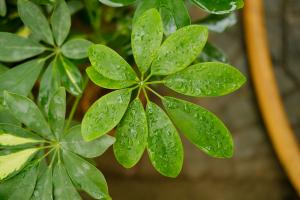1、 Base fertilizer shall be added during planting
When planting flower seedlings, or when flower friends change pots, they should add an appropriate amount of base fertilizer to the soil, so as to ensure that the flower seedlings or newly implanted plants have sufficient nutrients and can grow rapidly. It is best to use animal feces and fish bone meal as basic fertilizer. Some friends also put cooked soybeans on the bottom of the flowerpot as supplementary base fertilizer

2、 Frequent fertilization during growth period
During the growth period of Begonia Bambusa, a large amount of nutrients are required. If the nutrition supply is not available at this time, it will affect the growth of the plant, so frequent fertilization is required. When watering, we can mix the water with relatively thin bean cake water. Apply organic fertilizer every other week or so. A simpler way is to sprinkle diluted organic fertilizer on the leaves

3、 Apply more phosphorus and potassium fertilizer during pregnancy and bud stage
If you want to make the flowers dense and bright, the function of phosphate fertilizer can not be underestimated. Phosphorus can make the color of flowers more gorgeous, strong and full. Rice bran, chicken manure and bone meal can be used as phosphorus fertilizer. Potassium can make the root system of flowers stronger, reduce diseases and insect pests, and make the flowers more fragrant. There is a lot of potassium in plant ash, which is easier to get. Of course, for family breeding friends, you can also choose to add some low concentration organic fertilizer when watering, which is convenient and hygienic. It should be noted that fertilization should be stopped when it is about to bloom

4、 Do not apply fertilizer during dormancy
When the flowering period and winter dormancy period of Begonia Bambusa, fertilization should be stopped. At this time, not so much nutrients are needed, and the nutrient reserves in the early stage are sufficient. The root growth of the plant is slow. If you continue to apply fertilizer, it may lead to too much fertilizer for the root to absorb, and finally the root will rot

 how many times do yo...
how many times do yo... how many planted tre...
how many planted tre... how many pine trees ...
how many pine trees ... how many pecan trees...
how many pecan trees... how many plants comp...
how many plants comp... how many plants can ...
how many plants can ... how many plants and ...
how many plants and ... how many pepper plan...
how many pepper plan...





























